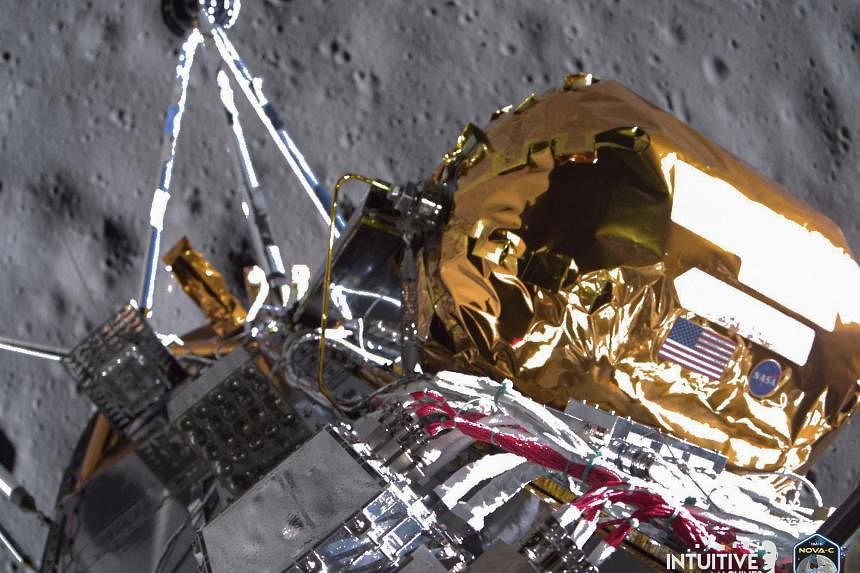HOUSTON - Odysseus, the first US spacecraft to land on the Moon since 1972, neared the end of its fifth day on the lunar surface still operational, but with its battery in its final hours before the vehicle is expected to go dark, according to flight controllers.
Texas-based Intuitive Machines said in an online update on Feb 27 that its control centre in Houston remained in contact with the lander as it “efficiently sent payload science data and imagery in furtherance of the company’s mission objectives”.
The spacecraft reached the lunar surface Feb 22 after an 11th-hour navigational glitch and white-knuckle descent that ended with Odysseus landing in a sideways or sharply tilted position that has impeded its communications and solar-charging capability.
Intuitive Machines said the next day that human error was to blame for the navigational issue. Flight readiness teams had neglected to manually unlock a safety switch before launch, preventing subsequent activation of the vehicle’s laser-guided range finders and forcing flight engineers to hurriedly improvise an alternative during lunar orbit.
An Intuitive executive told Reuters on Feb 24 that the safety switch lapse stemmed from the company’s decision to forgo a test-firing of the laser system during pre-launch checks to save time and money.
Whether or not failure of the range finders and last-minute substitution of a work-around ultimately caused Odysseus to land in an off-kilter manner remained an open question, according to Intuitive officials.
Nevertheless, the company said on Feb 23 that two of the spacecraft’s communication antennae were knocked out of commission, pointed the wrong way, and that its solar panels were likewise facing the wrong direction, limiting the vehicle’s ability to recharge its batteries.
As a consequence, Intuitive said on Feb 26 that it expected to lose contact with Odysseus on the morning of Feb 27, cutting short the mission that held a dozen science instruments for the National Aeronautics and Space Administration (Nasa) and several commercial customers and had been intended to operate on the Moon for seven to 10 days.
Beside crater wall?
On the morning of Feb 27, Intuitive said controllers were still “working on final determination of battery life on the lander, which may continue up to an additional 10 to 20 hours”.
The latest update from the company indicated the spacecraft might last for a total of six days before the Sun sets over the landing site.
The company’s shares were down 8 per cent on Feb 27, paring losses after Intuitive said it was still in touch with the lander. Still, the stock has wiped out most of its gain since late last week.
It remained to be seen how much research data and imagery from various payloads might go uncollected because of Odysseus’ cockeyed landing and shortened lunar lifespan.
Nasa paid Intuitive US$118 million (S$159 million) to build and fly Odysseus.
Nasa chief Bill Nelson told Reuters on Feb 27 he understood that agency scientists expected to retrieve some data from all six of their payloads. He also said Odysseus apparently landed beside a crater wall and was leaning at a 12-degree angle, though it was not clear whether that meant 12 degrees from the surface or 12 degrees from an upright position.
Intuitive executives said on Feb 23 that engineers believed Odysseus had caught the foot of one of its landing legs on the lunar surface as it neared touchdown and tipped over before coming to rest horizontally, apparently propped up on a rock.
No photos from Odysseus on the lunar surface have been transmitted yet. But an image from an orbiting Nasa spacecraft released on Feb 26 showed the lander as a tiny speck near its intended destination in the Moon’s south pole region.
Despite its less-than-ideal touchdown, Odysseus became the first US spacecraft to land on the Moon since Nasa’s last crewed Apollo mission to the lunar surface in 1972.
It was also the first lunar landing ever by a commercially manufactured and operated space vehicle, and the first under Nasa’s Artemis programme, which aims to return astronauts to Earth’s natural satellite this decade. REUTERS

